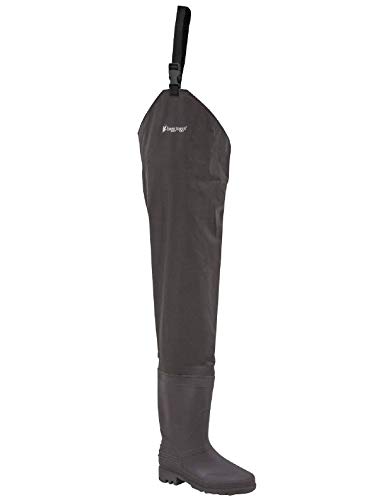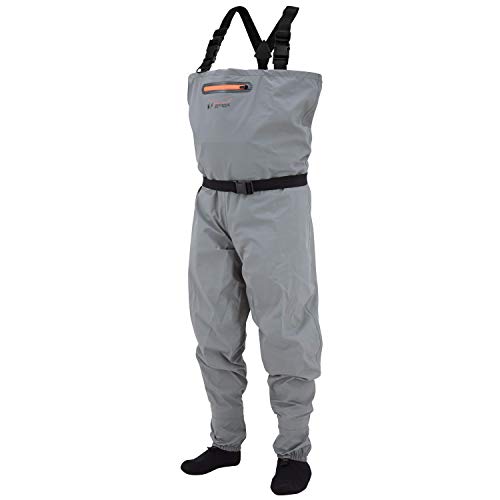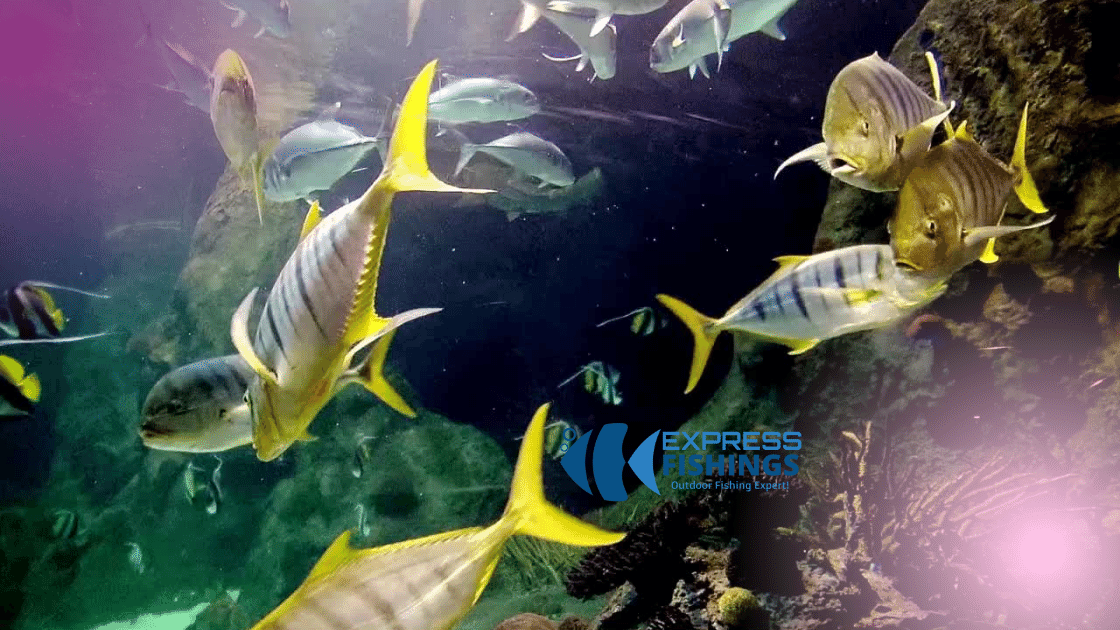Fish anglers fish for trout in cold streams, whether they are in Arkansas or Colorado, and use waders and fly tackle to catch big ones. The best wader is the most effective tool to get into the water.
Good waders are indispensable fly fishing gear. They can be waterproof, brush-busting, and can even slip on slippery rocks. It can be difficult to determine what features to look for in fly fishing waders.
Have questions? We can help! We can help you if you are new to fly fishing or are looking for new waders. You’ll find reviews and a buying guide for some of the best fly fishing waders.
The Best Fly Fishing Waders Today
- Foxelli Neoprene Chest WadersThe Best Budget Neoprene Waders For Fly Fishing
- Frogg Toggs Rana II PVC Bootfoot Hip WaderThe Best Hip Waders For Fly Fishing
- Orvis Pro Chest WadersThe Best Chest Waders For Fly Fishing
- Simms Freestone Stockingfoot Wading Pants WaterproofThe Best Wading Pants For Fly Fishing
- Frogg Toggs Canyon II Breathable Chest Wade
The Best Fly Fishing Waders – Reviewed
Foxelli Neoprene Chest Waders – The Best Budget Neoprene Waders For Fly Fishing
Material 4mm neoprene
Foxelli’s Neoprene Waders are an excellent choice for fly anglers who don’t mind dressing up like duck hunters. They’re durable and warm and they work well.
These chest waders are made by Foxelli from 4mm Neoprene. They provide excellent insulation against cold water and allow for free movement. You can count on being both dry and warm.
Although neoprene can withstand a lot of abuse, it is not something I would use to push through the woods. I would instead pack the waders and take them to the stream.
You can expect nice extras such as a few D rings and some carabiners for attaching equipment. There is also a large outer pocket and a small mesh inner pocket.
These boots are sturdy but run a little small. If you aren’t satisfied with the cushion provided by these boots, I recommend ordering one size larger.
Pros
- Amazing price
- Very warm
- Good boots
- Extras such as pockets, D-rings, and carabiners are nice additions.
Cons
- Camo is only available
Frogg Toggs Rana II PVC Bootfoot Hip Wader – The Best Hip Waders For Fly Fishing
Material PVC
Fly fishing can be expensive. This is why budget anglers often feel that this sport is a luxury. The Rana II hip wader makes it possible to fish icy streams at a reasonable price.
Rana II is made from PVC and it won’t leak unless there are tears in the seams or a hole. These waders have proven to be extremely durable and will last for many years. These hip waders are great for long walks, brambles, and thorny terrain.
The fit is true-to-size. Order size 10 waders if you have a shoe size 10.
These hip waders have decent boots, but an extra insole may be helpful if your feet start to feel the rocks.
These are a great choice for hot and cold weather, provided you don’t expect any breathability or can tolerate clammy legs.
Pros
- Extremely affordable
- As tough as nails
- Good boots
- Ideal for hot weather and brush-busting
Cons
- It is not breathable. Your legs will become clammy.
Orvis Pro Chest Waders – The Best Chest Waders For Fly Fishing
Material Cordura Nylon shells with ePTFE layers of 4- and 5-layers
Orvis is synonymous with fly fishing. Orvis is also committed to quality.
Orvis Pro waders are the best, but not cheap. They are made with a tough Cordura nylon top and a 5-layer Cordura below their waists. Under this tough exterior is an undisclosed layer of ePTFE that works like magic to remove sweat vapor. A nylon tricot liner is placed against your clothing.
You can’t ask for more: Waterproof, breathable, and tough
Orvis seems to know!
You’ll find plenty of pockets with zippers on the sides and front. These pockets will hold your keys, wallet, keys, or phone.
These waders are very well made. They have a great fit, with well-designed, sock-like booties that can fit in wading boots and integrated gravel guards. There is even a fly patch on their front bib.
Layering with modern polypropylene or fleece is a good idea for cold water and freezing weather. But, if you are not in the heat of summer or really warm climates, these waders will be your best friend.
You can expect to pay a premium for this quality.
Pros
- Awesome quality
- Extremely tough exterior fabric
- Very breathable
- Excellent bootie design
- Nice extras like zippered pockets
- Integral gravel guards
- Fit is great
Cons
- It’s expensive!
Simms Freestone Stockingfoot Wading Pants Waterproof – The Best Wading Pants For Fly Fishing
Material Toray QuadraLam (2 ply nylon outer layer sandwiched with ePTFE between an inner layer).
The Freestone wading pant is a high-quality, premium option. They are exactly what you would expect from Simms. These pants are ideal for warmer temperatures where chest coverage can roast you.
Toray’s QuadraLam fabric is used to make these pants. They are waterproof and breathable. Quadralam is not quite as waterproof as Gore-Tex but will keep you dry even in warmer temperatures.
The fit is almost identical to normal pants. Simms recommends that you carefully review the sizing chart, paying attention to the inseam as well as waist. Order more if your feet are particularly large for your height or size.
You can expect exceptional attention to detail. The wading pants have two front pockets and integrated gravel guards. They also come with anti-microbial Neoprene booties.
These waders are durable and can be worn for long distances. Simms offers excellent customer service if you do damage them.
Pros
- Breathable fabric
- Two front pockets
- Integral gravel guards
- Anti-microbial neoprene feet
- Ideal for long walks and warmer weather
Cons
- ?? ??
Frogg Toggs Canyon II Breathable Chest Wader
Material 4-ply nylon outer with an ePTFE breathable layer
Frogg Toggs is a respected manufacturer of wet-weather outerwear. The Canyon II chest wader, which offers great performance at an affordable price, is an excellent choice.
Canyon II waders look like regular rain gear. They have a layer of breathable ePTFE between an outer layer and an inner layer that is more comfortable for your skin. They are waterproof unless you break them or fail to seal the seams.
While it’s reasonably warm, I would layer in icy water. However, for most anglers, the waders will be adequate over regular clothing.
The ePTFE will help to vent sweat vapor in warmer temperatures. Frogg Toggs has not disclosed which product they have included so I cannot give you a better idea of how it will wick moisture.
These waders heat up in hot weather and with warm water.
The Canyon II features a waterproof zippered pocket in the middle of the chest that can be used as a place to store your phone or wallet.
Frogg Toggs has a sizing guide that will help you find the right size.
These otherwise great waders are hampered by the 4mm Neoprene Stocking Foot. They can sometimes fail, causing leaks. Frogg Toggs’s customer service is poor.
These are great entry-level breathable waders and well worth the money.
Pros
- Amazing price
- Fabric that breathes
- Waterproof chest pocket
Cons
- Poor quality control can cause stockingfeet to fail.
- Not as breathable in warmer weather or water as I would like
Guide to Buying: How to Select Fly Fishing Waders
Are you looking for hip, pants, or chest fly fishing waders?
Hip Waders – These are the cheapest option and cover most of your leg.
They are the lightest and easiest to transport, and they perform best in shallower, warmer water. The risk of water getting on top in cold streams is too high. If you don’t like standing in ice water until you feel numb, this option should be saved for water that you are willing to swim in.
Pant – Pant waders can be described as waterproof pants. They are as easy to use as your favorite pair and just as comfortable.
Anglers who fish in cold streams in warmer climates will often choose this option, even though they are more expensive than hip waders. They provide insulation where you are most needed but don’t allow your upper body to lose heat.
You’ve probably worked in streams where the water was cold but the air was hot, and you know why they were created.
The downside? They aren’t as waterproof as chest waders and they’re almost as bulky and heavy.
Chest – This is the most popular and expensive option for fly anglers.
Chest waders offer protection against cold water and will dry you to your mid-abdomen, or perhaps a bit higher depending on how tall you are. These are great for colder climates and colder waters, so make sure you choose the right pair.
They are also the most difficult to pack and heavy.
Stockingfoot and Bootfoot Fly Fishing Waders
Stockingfoot – Stockingfoot waders are finished in waterproof booties, which can be worn over additional boots.
You can choose the boot that suits you best, and you can even alter your boots to fit your needs.
It matters more than you may think.
Bootfoot waders can slip on and off boots if the boot fitting is loose. This creates a slide and shift at the ankle/sole for most people, which can lead to the tinier footing.
Stockingfoot waders have one drawback: you will need to spend more money on wading shoes, which is the most expensive option.
Bootfoot – Bootfoot waders come with a pair of waterproof wading shoes built-in, making them an affordable option for anglers who are on a tight budget.
As I said, these boots will allow you to slip your feet in. They should be loose at the ankle and often the foot. After-market wading boots are better for this purpose.
Fly Fishing Wader Materials Explained
PVC – Polyvinyl Chloride is a plastic that can be made flexible to look almost like fabric. It is waterproof and tough. However, it does not breathe. This keeps sweat vapor from getting on your skin.
Nylon – Nylon is an inexpensive material. Its thickness can be measured in Denier. A higher Denier count means greater durability and stiffness.
Nylon is easy to cover with plastics and can be made waterproof, but it does not offer much insulation against cold water. You can layer on thermal underwear or fleece trousers underneath a nylon wader.
These are usually reserved for fly fishing waders at entry-level, but they may be an option for those who fish in warmer waters and have a limited budget.
Neoprene is a synthetic rubber. It’s usually about 4mm thick in waders. Waders that are thicker will keep you warmer while waders that are thinner won’t provide as much protection.
Neoprene offers both excellent insulation and complete waterproofness. It’s easy to see how it is popular in mid-range waders.
There are a few drawbacks to Neoprene, however. It’s not breathable and sweat vapor can build up inside. This will make you feel clammy and damp. It is also very warm, which can be great when you have to, but not when you don’t.
Neoprene is great if you fish in very cold waters. You’ll be able to roast yourself in warm water if you wear neoprene waders.
It’s difficult to repair neoprene that you have inadvertently damaged.
Combinations of breathable fabrics ePTFEs such as Gore-Tex or eVent look almost the same as Teflon in your skillet. However, they are just stretched thinly to form a porous, lightweight membrane. It’s filled with trillions of tiny holes per square centimeter. However, the water’s surface tension won’t permit it to seep through. Air–and even sweat vapor—-can escape.
ePTFE are a combination of waterproofness and breathability making them a great choice for fly fishing waders. To protect them against abrasions and cuts, ePTFE is often paired with nylon or other tough fabrics.
Safety of Fly Fishing Waders
The common belief is that chest waders, or any wader, will fill with water and drag an angler to their death.
It is, however, a myth despite being repeated endlessly.
Sherri Russel is an avid fly angler and knows exactly what she’s talking about.
It starts like any other day on a river with the water high, and cold. The current swirls around your knees, thighs, waist, and then onto your feet. It happens halfway through. You lose your balance when a rock slips under your foot, and you find yourself being washed downstream, feet first. The icy cold water in the water makes your breath stop. You have an epiphany. Your chest waders are going to make you drown.
You’re actually not. Regardless, it’s not because of the waders. It’s no more difficult to swim in waders than it is to do so in regular clothing, even though they increase drowning risk.
Do you doubt her? These videos show duck hunters putting the myth to the test.
Waders don’t somehow defy gravity and pull you to the bottom, it is a fact.
If you don’t have your safety strap on, it’s easy for you to fill your chest waders with water. Because they catch the current, you will be dragged–rapidly acceleration–to the speed, the current is going.
You may drown if panic sets in.
Don’t resist the current–swim along with it and the bank.
Although your waders won’t cause you to sink, they might catch the current for a moment.
Last Thoughts
Fly fishing waders that are both affordable and meet your requirements are the best.
Tough hip waders are great for fly anglers in warmer climates. They allow you to trample brush, thorns, and keep dry while you fish all day. Thick neoprene works well in colder temperatures and with icy water. There are options for every situation.
We hope this article helped you choose your next pair of waders. If not, we would love to hear about it!
Leave a comment below!











